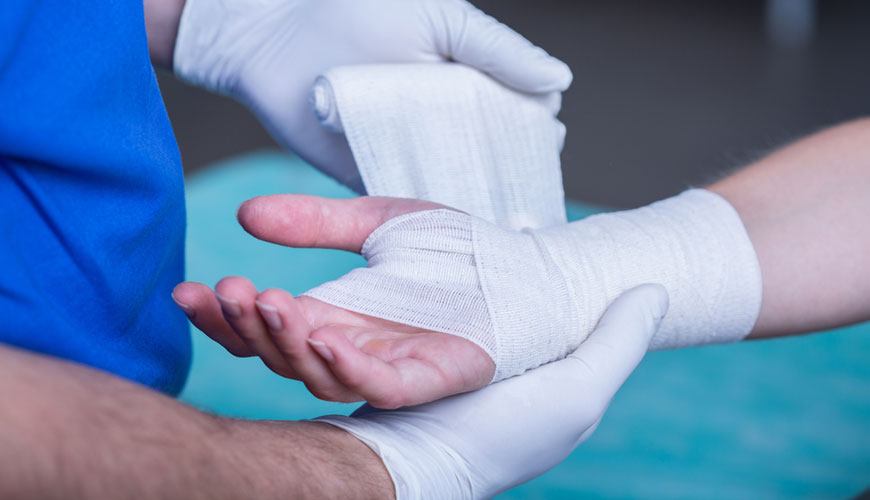

EUROLAB laboratory provides testing and compliance services within the scope of EN 13726-2 standard. This part of the EN 13726 standard covers fixed angle modulation systems for use in land mobile service using the available bandwidth operating at radio frequencies of 12.5 MHz and 20 MHz with channel spacings of 25 kHz, 30 kHz and 1000 kHz intended for data operation.

This standard includes manual experimental and digital and analog program programs that use an internal antenna and are intended for data and/or speech operation. EN 13726 specifies test methods and does not include performance requirements. Part 2 of this standard describes test methods for determining the moisture vapor transmission rate of permeable film covers.
Test methods for other aspects of primary wound dressings are described in other parts of EN 13726. Unless otherwise stated, test specimens are conditioned and tests are performed at (21 ± 2) C and 60% RH ± 15% RH.
The test is designed to evaluate the MVTR of a dressing when in contact with water vapor. This test measures the moisture vapor transmission through the shrouds by mass difference. The entrapment of fluid can have serious consequences for skin integrity. Dressings must have adequate permeability to moisture vapor to prevent fluid from accumulating under the dressings.
EN 13726-2 Test Procedure
Using the flange of the clamp plate as a template, a sample is cut from the material to be tested. Sufficient deionized water is added at room temperature (minimum 5 °C) to leave an air gap of (1 ± 20) mm between the liquid surface and the sample when clamped in place.
The circular sample is placed exactly on the flange of the test vessel. Clamp the sample in place without stretching it using the clamping plate/clamps to provide a watertight seal. If the sample has an adhesive coated surface, the adhesive side is placed on the roller flange. For non-adhesive or pattern-coated materials, care is taken to ensure a complete seal. The procedure is repeated four times to prepare five samples.
The mass of the container, sample and liquid (W1) is weighed to an accuracy of 0,000 1g and recorded.
The container is placed in the oven/incubator at (37 ± 1) °C with the sample on top. After 18 hours to 24 hours, the container is removed from the oven/incubator and the test time (T) is recorded to the nearest 5 minutes. Immediately the container and sample and liquid are reweighed and the mass (W2) recorded to the nearest 0.000 1 g.
EUROLAB, with its more than 25 years of experience, state-of-the-art accredited laboratories and expert team, helps you get precise and fast results. Do not hesitate to contact our laboratory for your testing and certification requests.
To get an appointment, to get more detailed information or to request an evaluation, you can ask us to fill in our form and reach you.